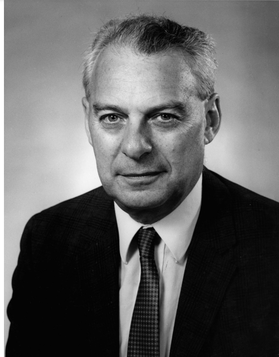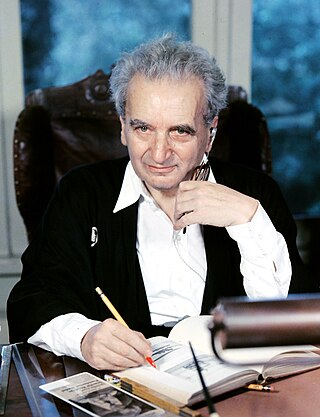Related Research Articles

In physics and geometry, isotropy is uniformity in all orientations. Precise definitions depend on the subject area. Exceptions, or inequalities, are frequently indicated by the prefix a- or an-, hence anisotropy. Anisotropy is also used to describe situations where properties vary systematically, dependent on direction. Isotropic radiation has the same intensity regardless of the direction of measurement, and an isotropic field exerts the same action regardless of how the test particle is oriented.

In geometry, a coordinate system is a system that uses one or more numbers, or coordinates, to uniquely determine the position of the points or other geometric elements on a manifold such as Euclidean space. The order of the coordinates is significant, and they are sometimes identified by their position in an ordered tuple and sometimes by a letter, as in "the x-coordinate". The coordinates are taken to be real numbers in elementary mathematics, but may be complex numbers or elements of a more abstract system such as a commutative ring. The use of a coordinate system allows problems in geometry to be translated into problems about numbers and vice versa; this is the basis of analytic geometry.
In fluid dynamics, turbulence or turbulent flow is fluid motion characterized by chaotic changes in pressure and flow velocity. It is in contrast to a laminar flow, which occurs when a fluid flows in parallel layers, with no disruption between those layers.
In physics, mathematics and statistics, scale invariance is a feature of objects or laws that do not change if scales of length, energy, or other variables, are multiplied by a common factor, and thus represent a universality.
In mathematics, in the fields of multilinear algebra and representation theory, the principal invariants of the second rank tensor are the coefficients of the characteristic polynomial
Fluid mechanics is the branch of physics concerned with the mechanics of fluids and the forces on them. It has applications in a wide range of disciplines, including mechanical, aerospace, civil, chemical, and biomedical engineering, as well as geophysics, oceanography, meteorology, astrophysics, and biology.

David Pierre Ruelle is a Belgian mathematical physicist, naturalized French. He has worked on statistical physics and dynamical systems. With Floris Takens, Ruelle coined the term strange attractor, and developed a new theory of turbulence.

In fluid dynamics, the law of the wall states that the average velocity of a turbulent flow at a certain point is proportional to the logarithm of the distance from that point to the "wall", or the boundary of the fluid region. This law of the wall was first published in 1930 by Hungarian-American mathematician, aerospace engineer, and physicist Theodore von Kármán. It is only technically applicable to parts of the flow that are close to the wall, though it is a good approximation for the entire velocity profile of natural streams.
In isotropic turbulence the Kármán–Howarth equation, which is derived from the Navier–Stokes equations, is used to describe the evolution of non-dimensional longitudinal autocorrelation.
Robert Harry Kraichnan, a resident of Santa Fe, New Mexico, was an American theoretical physicist best known for his work on the theory of fluid turbulence.

Philip Geoffrey Saffman FRS was a mathematician and the Theodore von Kármán Professor of Applied Mathematics and Aeronautics at the California Institute of Technology.

Subhasish Dey is a hydraulician and educator. He is known for his research on the hydrodynamics and acclaimed for his contributions in developing theories and solution methodologies of various problems on hydrodynamics, turbulence, boundary layer, sediment transport and open channel flow. He is currently a distinguished professor of Indian Institute of Technology Jodhpur (2023–). Before, he worked as a professor of the department of civil engineering, Indian Institute of Technology Kharagpur (1998–2023), where he served as the head of the department during 2013–15 and held the position of Brahmaputra Chair Professor during 2009–14 and 2015. He also held the adjunct professor position in the Physics and Applied Mathematics Unit at Indian Statistical Institute Kolkata during 2014–19. Besides he has been named a distinguished visiting professor at the Tsinghua University in Beijing, China.
Continuous gusts or stochastic gusts are winds that vary randomly in space and time. Models of continuous gusts are used to represent atmospheric turbulence, especially clear air turbulence and turbulent winds in storms. The Federal Aviation Administration (FAA) and the United States Department of Defense provide requirements for the models of continuous gusts used in design and simulation of aircraft.
The von Kármán wind turbulence model is a mathematical model of continuous gusts. It matches observed continuous gusts better than that Dryden Wind Turbulence Model and is the preferred model of the United States Department of Defense in most aircraft design and simulation applications. The von Kármán model treats the linear and angular velocity components of continuous gusts as spatially varying stochastic processes and specifies each component's power spectral density. The von Kármán wind turbulence model is characterized by irrational power spectral densities, so filters can be designed that take white noise inputs and output stochastic processes with the approximated von Kármán gusts' power spectral densities.
Reynolds stress equation model (RSM), also referred to as second moment closures are the most complete classical turbulence model. In these models, the eddy-viscosity hypothesis is avoided and the individual components of the Reynolds stress tensor are directly computed. These models use the exact Reynolds stress transport equation for their formulation. They account for the directional effects of the Reynolds stresses and the complex interactions in turbulent flows. Reynolds stress models offer significantly better accuracy than eddy-viscosity based turbulence models, while being computationally cheaper than Direct Numerical Simulations (DNS) and Large Eddy Simulations.

This is a bibliography of works by Theodore von Kármán.
Leslie Howarth, FRS was a British mathematician who dealt with hydrodynamics and aerodynamics.

Max Erich (Eric) Reissner was a German-American civil engineer and mathematician, and Professor of Mathematics at the Massachusetts Institute of Technology. He was recipient of the Theodore von Karman Medal in 1964, and the ASME Medal in 1988
The Batchelor–Chandrasekhar equation is the evolution equation for the scalar functions, defining the two-point velocity correlation tensor of a homogeneous axisymmetric turbulence, named after George Batchelor and Subrahmanyan Chandrasekhar. They developed the theory of homogeneous axisymmetric turbulence based on Howard P. Robertson's work on isotropic turbulence using an invariant principle. This equation is an extension of Kármán–Howarth equation from isotropic to axisymmetric turbulence.
Albert Alan Townsend was an Australian scientist specialized in fluid dynamics. He was the author of the textbook The Structure of Turbulent Shear Flow. The terms Townsend's eddies(or Townsend's wall-attached eddies), Batchelor–Howells–Townsend spectrum and Townsend–Perry constants in turbulence research are named after him. His PhD advisor was G. I. Taylor and he was a close collaborator of George Batchelor.
References
- ↑ Taylor, G. I. (1935). Statistical theory of turbulence. Proceedings of the Royal Society of London. Series A, Mathematical and Physical Sciences, 151(873), 421-444.
- ↑ Monin, A. S., & Yaglom, A. M. (2013). Statistical fluid mechanics, volume II: Mechanics of turbulence (Vol. 2). Courier Corporation.
- ↑ Panchev, S. (2016). Random Functions and Turbulence: International Series of Monographs in Natural Philosophy (Vol. 32). Elsevier.
- ↑ Hinze, J. (1938). 0. 1975 Turbulence.